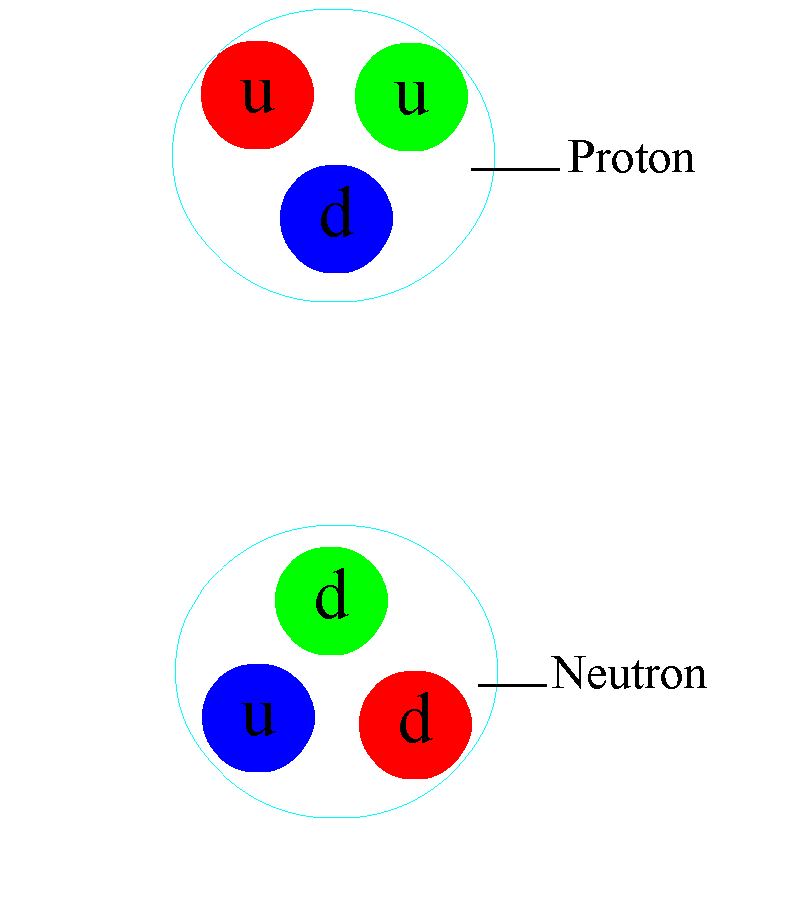Your cart is currently empty!
Strong Force
The strong force is one of the Four Fundamental Forces of the universe. Just like with the weak and electromagnetic forces, we’ll start by talking about energy. Whenever dealing with the fundamentals, there are lots of effects so things can get a bit complicated. Try not to get bogged down by names since we’re only really talking about energy.
Energy will always condense into a looping string that resonates at specific harmonic frequencies. The resonance of the energy determines the attributes of the particle that we observe. Some of the strings resonate at a region of frequencies that we call quarks. A quark has a few attributes that we call mass, color, flavor and charge. We’ll briefly go over these because they will be referenced later.
Mass, as you may know, is a property of matter. The mass of a string is always a specific value depending on its flavor. Flavor is a frequency that is designated either up or down; four other types exist but up and down are by far the most common. Charge is the same thing as electrical charge, and is deemed either positive or negative. And finally, color is a frequency that we label either red, green, or blue.
Remember that opposites attract. The reason is because their opposite wavelengths destructively interfere with each other. When it comes to color, you’ll have to imagine this as a group of three that destructively interferes with each other.
I understand it best in terms of shapes, but be warned that it is just an approximation. Each block in the following animation represents a quark at a frequency labeled by color. The grey block represents a gluon, an even smaller string traded between quarks that acts like glue to keep them together.

You’ll notice the green quark shrinks and turns red when trading it’s gluon with the red quark. This is a flaw in the representation because the blocks cannot show the repeating nature of waves. In music, an octave is a repeat in a wavelength; the same principle is happening here.
The strong force is a result of the stability offered by the destructive interference of a red-green-blue quark cluster. Whenever a quark gives off a gluon, the constructive interference of same colored quarks forces the gluon to add to another quark.
 Scientists like use a particle model to show the trading of gluons between quarks. Whichever model works best for you to understand this concept is the one you should use. It’s difficult for our minds to conceive this sort of thing since our normal lives very rarely deal with interference.
Scientists like use a particle model to show the trading of gluons between quarks. Whichever model works best for you to understand this concept is the one you should use. It’s difficult for our minds to conceive this sort of thing since our normal lives very rarely deal with interference.
The Flavor of the quark determines its mass and charge. An up quark has a charge of +⅔ and a down quark has a charge -⅓. I am sorry to all of you that have learned to hate fractions; scientists believed they found the fundamental particle when they discovered the proton. Mistakes happen, we move forward.
Quarks cluster in triplets due to their colors, so we have only two options of combinations of flavor that don’t increase the magnitude of charge too great. Two up quarks and one down quark gives an overall charge of +1 and we call this a proton. One up quark and two down quarks means the charge is cancelled and we call these neutrons.
While I’m throwing names at you, I’ll give you two more. A hadron is a stable cluster of 3 quarks, protons and neutrons are types of hadrons. A pion is a relatively unstable cluster of 2 quarks, a hadron that loses a quark becomes a pion.
Positively charged hadrons (protons) constructively interfere and increase the overall energy. An increase in energy causes like charges to repel. But an interesting thing happens when a proton gets repelled from the nucleus of an atom.
The proton will rush away toward the edge of the nucleus but before it can escape, a passing antimatter quark will steal one of the down quarks, turning the hadron into a pion (3 quarks – 1 quark = 2 quarks, names are hard sometimes).
Your head might be spinning from the word antimatter, all it means here
is that it has the opposite frequency as a quark with mass. For this example, it simply doesn’t exist unless performing this action. We still don’t know much about antimatter but we are able to observe what happens.
The down quark lost by the proton will now be part of a pion headed back to the nucleus. The proton, no longer a stable 3-quark hadron will also rush back to the nucleus to grab another quark to fulfill its color balance.
The pion will deliver its stolen down quark to another hadron in the nucleus. This is one of the reasons neutrons exist in the nucleus. They are constantly accepting and providing quarks to stabilize the protons and serve as uncharged quark holders.

Color interactions and the quark exchange is the reason the nucleus of every atom stays together. It’s why any atoms exist at all. You and me and the Earth and your chair and the Andromeda galaxy and your favorite T-shirt are all able to exist because the strong force holds their atoms together.
Okay, you just made it through some pretty intense science concepts! If you didn’t totally get it, that’s just fine. There are several variables at play here so it’s understandably confusing at first. The fact that you are learning about the most fundamental parts of your universe means you’re lightyears ahead of the vast majority of our ancestors; that’s something to be proud of.